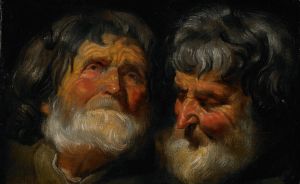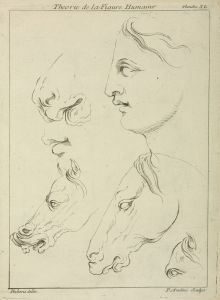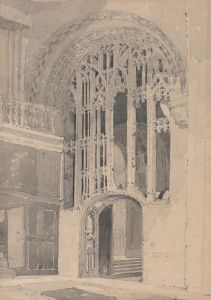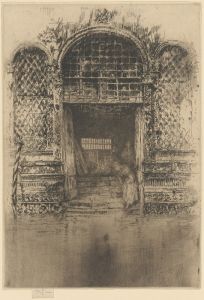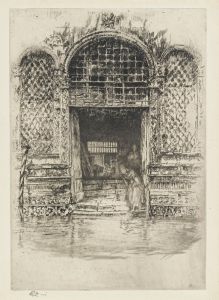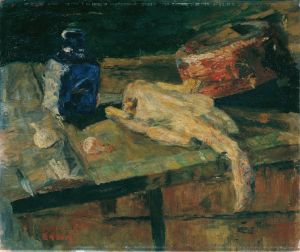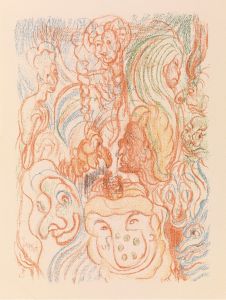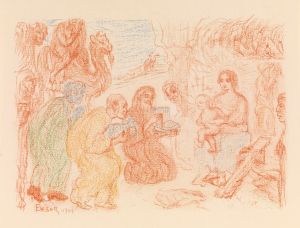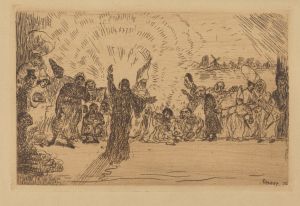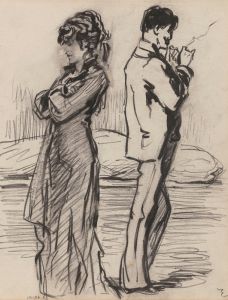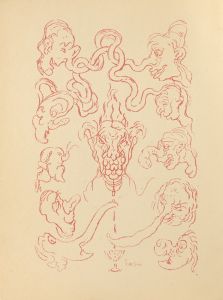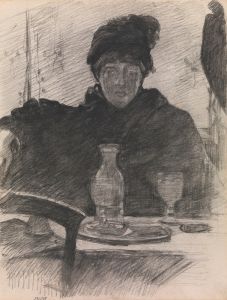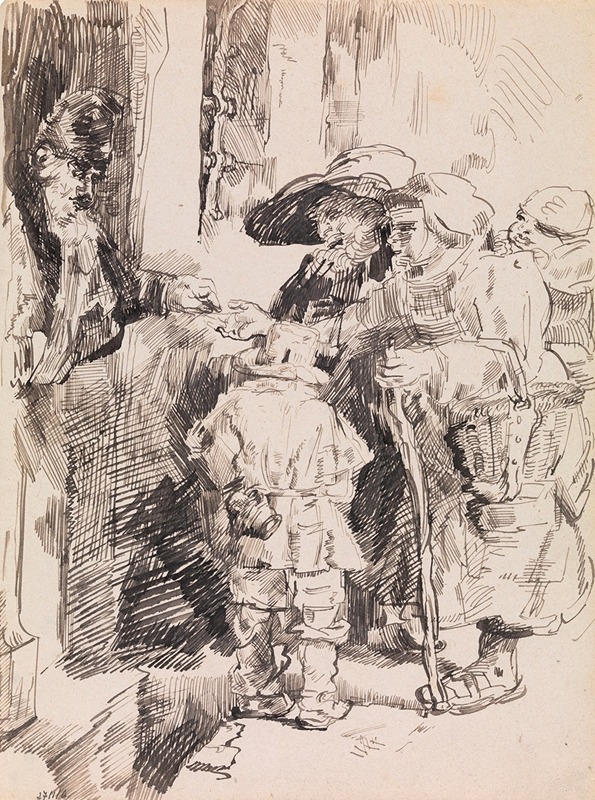
Beggars Receiving Alms at the Door of a House
A hand-painted replica of James Ensor’s masterpiece Beggars Receiving Alms at the Door of a House, meticulously crafted by professional artists to capture the true essence of the original. Each piece is created with museum-quality canvas and rare mineral pigments, carefully painted by experienced artists with delicate brushstrokes and rich, layered colors to perfectly recreate the texture of the original artwork. Unlike machine-printed reproductions, this hand-painted version brings the painting to life, infused with the artist’s emotions and skill in every stroke. Whether for personal collection or home decoration, it instantly elevates the artistic atmosphere of any space.
James Ensor's painting Beggars Receiving Alms at the Door of a House is a work by the Belgian artist, who is widely recognized for his distinctive style and significant contributions to modern art. Ensor (1860–1949) was a key figure in the Symbolist movement and an early influence on Expressionism. His works often explore themes of social critique, grotesque imagery, and the human condition, blending realism with fantastical elements.
Beggars Receiving Alms at the Door of a House is an oil painting created in 1880, during Ensor's early career. This period of his work is characterized by a focus on naturalistic depictions of everyday life, often portraying scenes of poverty and social inequality. The painting depicts a group of beggars gathered at the entrance of a house, receiving alms from an unseen benefactor. The figures are rendered with a sense of empathy and realism, highlighting the struggles of the marginalized in society. The composition emphasizes the contrast between the beggars and the implied wealth of the household, reflecting Ensor's interest in social issues.
The painting is notable for its subdued color palette and detailed brushwork, which are hallmarks of Ensor's early style. Unlike his later works, which often feature vivid colors and surreal imagery, this piece adheres to a more traditional approach, demonstrating his academic training and mastery of technique. The subject matter aligns with the broader artistic trends of the 19th century, which frequently addressed themes of poverty and charity, influenced by both Romanticism and Realism.
Beggars Receiving Alms at the Door of a House is housed in the Royal Museum of Fine Arts in Antwerp, Belgium, which holds an extensive collection of Ensor's works. The painting provides valuable insight into the artist's development and his engagement with the social realities of his time. It serves as an example of how Ensor's early works laid the foundation for the more experimental and provocative pieces that would define his later career.
This painting is an important part of Ensor's oeuvre, illustrating his ability to combine technical skill with a deep sensitivity to the human condition. It remains a significant work for understanding the evolution of his artistic vision and his contributions to the broader art movements of the late 19th and early 20th centuries.





